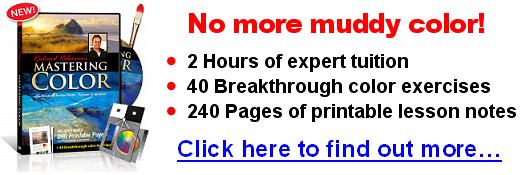Learn How to Paint Self Potraits
Painting self portraits is something that every artist interested in portraiture should do. Many artists don’t have a choice, as they don’t have any other live models, but that’s not the only reason why. Firstly, if you can’t depict your own character in a painting, how do you know you can depict somebody else’s? Secondly, painting yourself regularly is a good way to chart your own progress. Before you start painting a self portrait, you will need reference material to work from. Find a mirror, or two, or three – the more angles that you have of yourself, the better. Set up the largest mirror in a position behind your easel that shows at least your head and shoulders. If you have other mirrors, have them closer to you, to use for smaller details. Here’s a clever tip: Make a small mark using tape, paint or a felt-tip pen on the mirror, between your eyes. This will help you to know where to look every time, keeping the perspective the same the entire time that you are painting. It will also give you a reference point to keep your head in the right position. It isn’t necessary to use mirrors. You can also use a picture of yourself (or multiple pictures), but this would not be as good practice for painting from a model as using a mirror would be. When painting self portraits from pictures, it can be a fun and interesting exercise to turn the image upside down, and to paint it that way. This changes the way that you brain sees the picture, removing any preconceived ideas about shape, shadow and color, and allowing you to simply paint what you see, rather than what you think you see. This will help you to get a better likeness of yourself, but that shouldn’t be your primary goal when it comes to portrait painting. Being able to represent what you think about yourself (or what you think other people think about you) is important when painting a self portrait. Don’t spend too much time and attention on being accurate. Rather, try to put your emotions into the painting. Something that many people automatically do is to “correct” the image. It’s very easy to see what you might think of as flaws in your own face and body, but these features are what set you apart from other people. They add to your character and show your personality. Never leave these out or try to change them. Some people add props in their self portraits that are meaningful to them in the moment, or in their lives. When adding props to portrait painting, remember that you are the subject of the painting, not the props. Don’t let the props take attention away from you, rather, use them in a way that compliments the subject and that gives better insight into who you are. When you feel that you have completed the painting, stop working on it. Put it aside for a few days and come back to it later to decide if there is anything else that you would like to add or change. Don’t stop at one painting! Do another, and another, exploring different styles, emotions and settings.
| ||
|


Master the Colours DVD...

|
Although every attempt has been made to make information as accurate as possible, we are not responsible for any errors that may appear.
© Copyright 2015, OilPaintingTechniquesLessons.com. All Rights Reserved.





